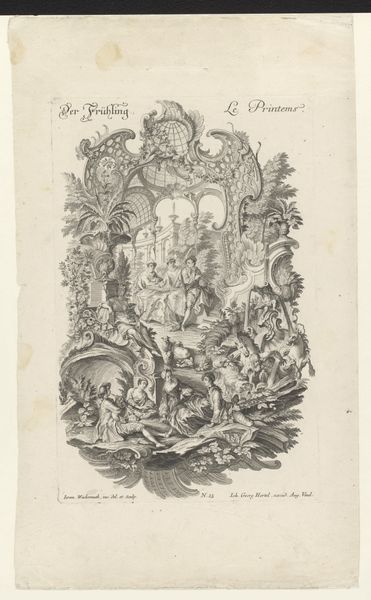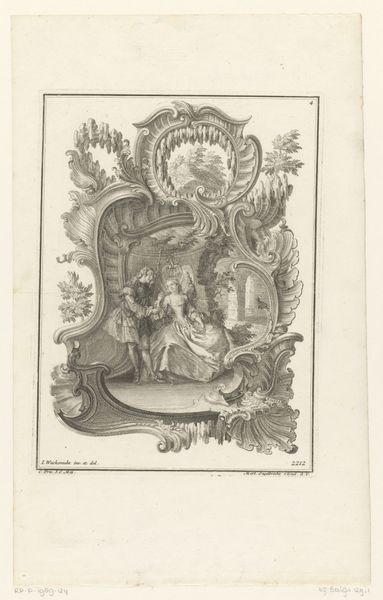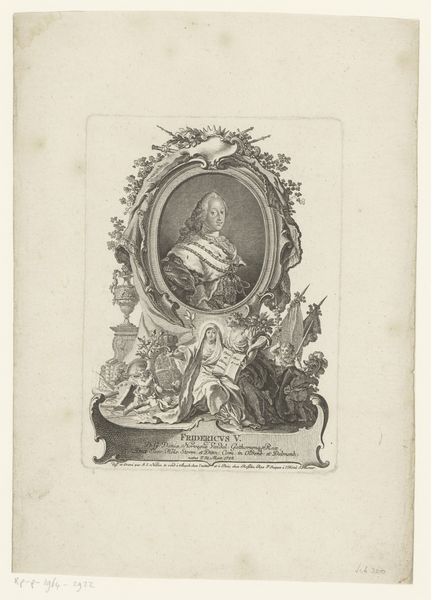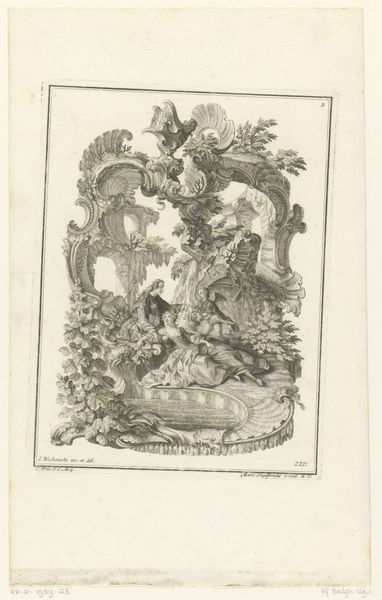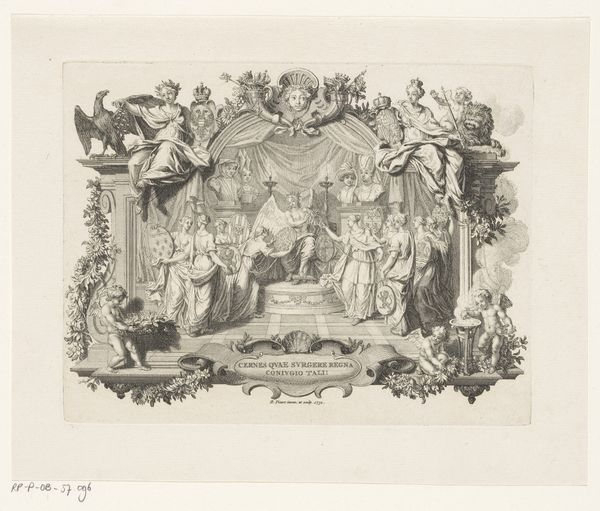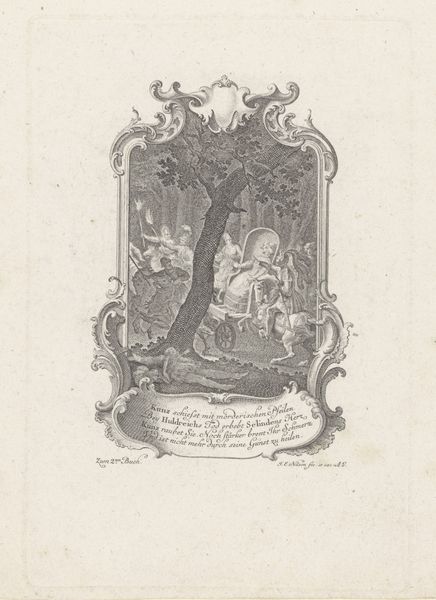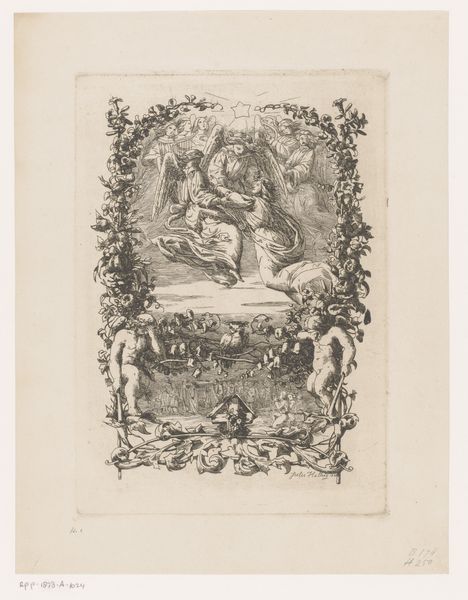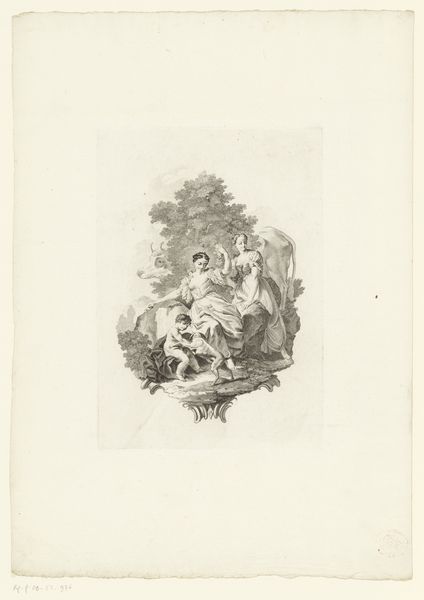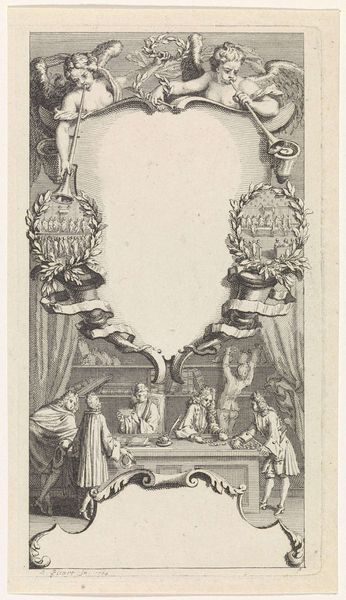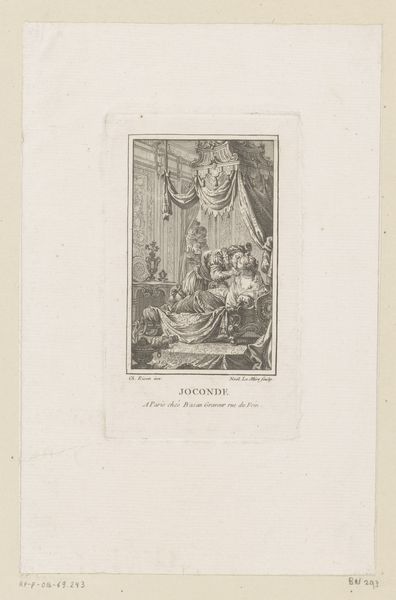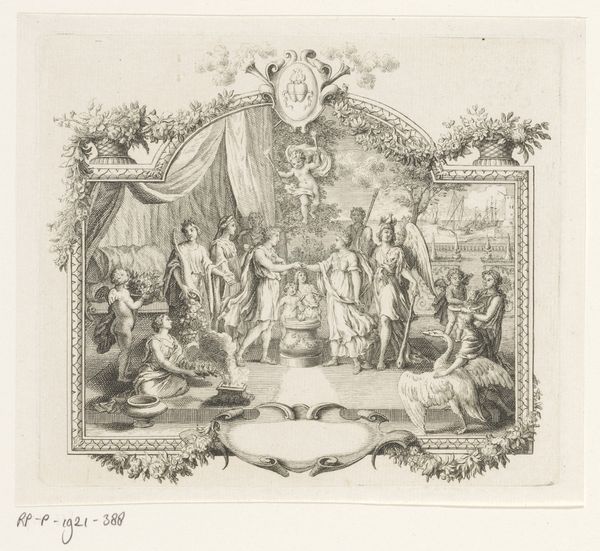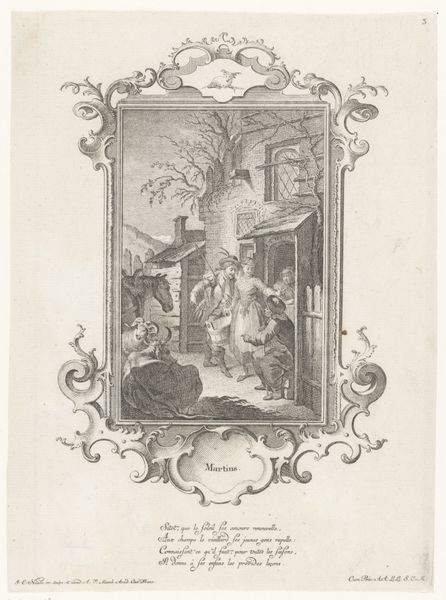
drawing, print, engraving
#
drawing
#
allegory
#
baroque
# print
#
pen sketch
#
landscape
#
form
#
line
#
history-painting
#
academic-art
#
engraving
#
miniature
Dimensions: height 139 mm, width 100 mm
Copyright: Rijks Museum: Open Domain
Curator: Oh, this is quite a curious piece! We're looking at "Gedenknaald voor een onbekende schilder," or "Memorial Needle for an Unknown Painter," created as a print by Simon Fokke in 1759. What's your first reaction? Editor: Mmm, melancholic, certainly. There's this almost theatrical staging – a monument framed by lush foliage, with figures draped in sorrow. A rather picturesque lament, wouldn't you agree? Curator: I find it evocative – like a miniature stage set for a tragedy, though the pen and ink soften the blow somehow. The allegorical elements are intriguing, from the grieving muses to the portrait veiled on the monument. All dedicated to a nameless artist! Fokke is creating a kind of double absence here. Editor: Exactly! Consider the needle itself. Its verticality directs the gaze upward, while the drapery conceals and reveals, playing with expectation and loss. This visual rhetoric constructs a powerful, albeit mediated, experience of mourning. And note how line dictates form, yet fades away too! Curator: Right! There’s an anonymity that actually universalizes the feeling. It's less about a specific painter and more about art itself – the ephemeral nature of creation, the potential for work to be lost or forgotten. It feels, ironically, eternal, that a print from the 1700's is still honoring someone forgotten to time. I almost wish I could know this artist now, share a coffee, and tell him they’re remembered. Editor: It’s a fascinating interplay, isn’t it? Fokke uses established Baroque conventions – the allegory, the dramatic composition – but for a purpose that transcends mere stylistic exercise. He engages with art as a concept, with memory, and the very real anxieties surrounding artistic legacy. We're mourning the artist but recognizing them. Curator: A small, intense reminder of what fades and what endures – not just in art, but in life itself. Editor: Indeed. The work really compels us to question the criteria of recognition and reevaluate our aesthetic sensitivity through the act of remembrance. A poignant meditation in monochrome!
Comments
No comments
Be the first to comment and join the conversation on the ultimate creative platform.
